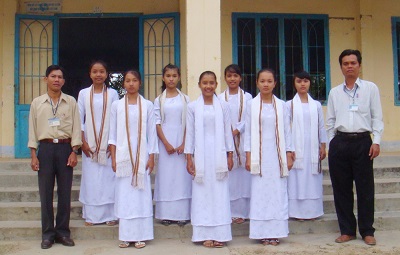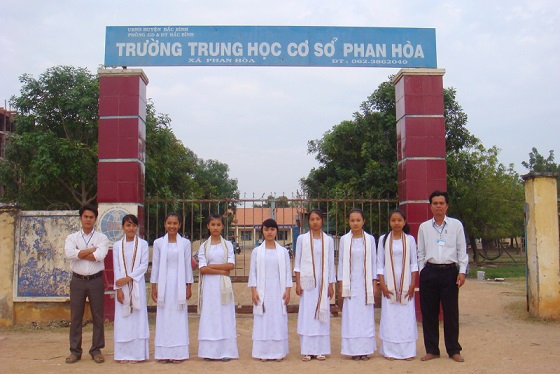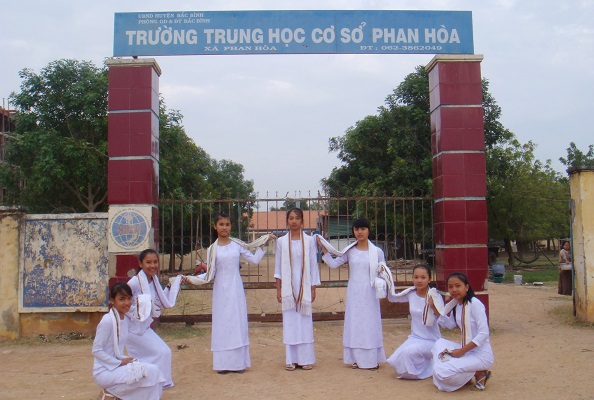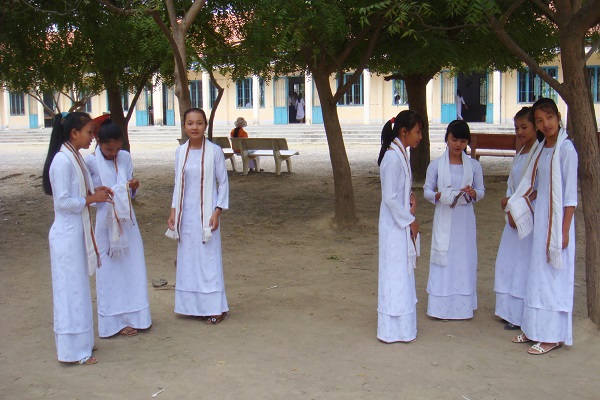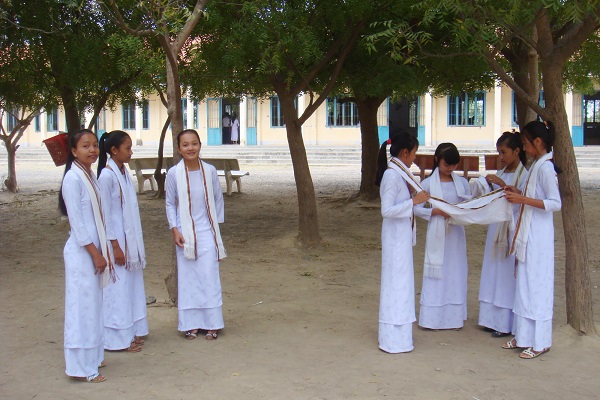

Xưa nay khi muốn bày tỏ đến sự biết ơn thì ông bà chúng ta thường dùng cụm từ “Dhar phuel”, “Ndua phuel” hoặc “Ndua dhar phuel”. Sau khi Interview Gru Lưu Quang Sang tại Sacramento, Putra Podam có interview tiếp gru Kiều Đại Thọ tại San Hose (Hoa Kỳ) về cụm từ “Dhar phuel” hay “Karun” khi nói đến cụm từ “Cảm ơn”. |

Khi muốn bày tỏ thái độ biết ơn đối với ai đó, thì xưa nay người Chăm thường chỉ dùng từ “Ndua Phuel” mang nghĩa “Cảm ơn”. Tuy nhiên, trong thời gian gần đây một số giới trẻ thường dùng từ “Karun” mang nghĩa “Cảm ơn” như một trào lưu mà chưa hiểu rõ nội dung như thế nào? |

Harei i-ni sa harei but bulan puis thun2018(11/21/2018).Di bal Seattle Wa kami hu ralo hajan papar saong su-uh su-auen nao tel nagar palei pala , bhum palei khaol drei. Kami hu jemah sa kadha adaoh Mua chieu ky niem Duy Yen&Quoc Ky saong angan Hajanbier harei nan krung.Ni pok alin nao abih adei sa-ai di dalam Fb ni. Yau ka sa-ai Trao Thanh, Karim Abdul Rahman, Gru Hajan, Putra Podam, Tho Dangnang,Chien Thang Uc, Indrapura Chau, Jham San Lam, Ikan Di Ram, Wa Praong,Fatimah Amin, Hangow Thien. Salam saong "That tiak" nya. [Thekwa Cam palei Ram] |

Bimong Po Cei Khar Mah Bangu tên tiếng Việt: “Lăng Cậu Hoa”, tọa lạc trên địa bàn thôn Lâm Thuận, xã Hàm Phú, huyện Hàm Thuận Bắc, tỉnh Bình Thuận. |

Thun baru (baruw) antarabangsa, dahlak lakau tadhau ayuh abih paran Cam kheng kadeng kajap karo Po pajieng ꨔꨭꩆ ꨝꨣꨭ ꨀꩆꨓꨣꨝꩃꨧ ꩝ ꨕꨨꨵꩀ ꨤꨆꨮꨭ ꨓꨖꨮꨭ ꨀꨢꨭꩍ ꨀꨝꨪꩍ ꨚꨣꩆ ꨌꩌ ꨇꨮꩃ ꨆꨕꨮꩃ ꨆꨎꩇ ꨆꨣꨯ ꨛꨯꨮ ꨚꨎꨳꨮꩂ ꩞ |

Khi nhắc đến nền văn minh và văn tự Champa, thì Chữ Thrah Chăm nói chung và chữ Rumi Cam (Latin) nói riêng nay đã trở thành di sản ngôn ngữ của chữ viết Chăm. Để làm rõ về hệ thống Rumi Cam EFEO, Thầy Lưu Quang Sang đã trình bày và lý giải một cách chi tiết về nguyên âm, phụ âm và cách cấu tạo. Theo quan điểm của Thầy, tại thời điểm này thì chữ viết Rumi Cam EFEO 1997 là hệ thống phiên âm khoa học nhất, nhằm hỗ trợ phiên âm và học chữ Thrah Chăm tiện lợi nhất. |

“Akhar Thrah Cham: Những quan điểm khác nhau” là bài viết của TS. Quảng Đại Cận đăng trong Facebook Can Quang, gồm 16 trang cả tài liệu tham khảo. Theo chúng tôi, đây không phải là một bài nghiên cứu khoa học mà là một bài ghi chép (sổ tay) có sắp xếp. Qua đó tác giả cố gắng phân tích và dẫn chứng một số từ AT có ngắn dài, có craoh aw không dar sa, có paoh Gak. Để làm cơ sở, để bảo vệ quan điểm, để ghi nhận những kết quả nghiên cứu của tác giả,... |

Harei ni sa harei padei July 4 2017. Dahlah lakau pok payua sa kadha adaoh "Tapa tabang tasik ranam (Karim Abdul Rahman). Qua vùng biển nhớ của Từ Công Phụng". Dahlah hu caong takra yau sa-ai Karim Abdul Rahman hu wak khan lac: "Kadha ni dahlah kieng alin hadom adei sa-ai takra adaoh panuec Cam, jang yau kieng magru akhar Cam tapa kadha adaoh. Thattiak" |

|

Lễ kỷ niệm 30 năm thành lập IOC-Champa đã diễn ra tại hội trường nhật báo Người Việt, thành phố Westminster, Nam California vào ngày 24 tháng 11 năm 2018. Nhân dịp này, một hội thảo bàn luận về Rumi Cam (Latin) và đi đến sự thống nhất dùng ký tự Rumi Cam EFEO 1997 của Viện Viễn Đông Bác Cổ (Pháp) đại diện cho chữ Rumi Cam. Khi nói đến chữ Rumi Cam thì người Chăm cần phải biết đến Po Perang (Po Prang) tức là ngài E.Aymonier, người là tác giả đầu tiên tạo nền móng cho chữ viết Rumi Cam ngày nay. |
